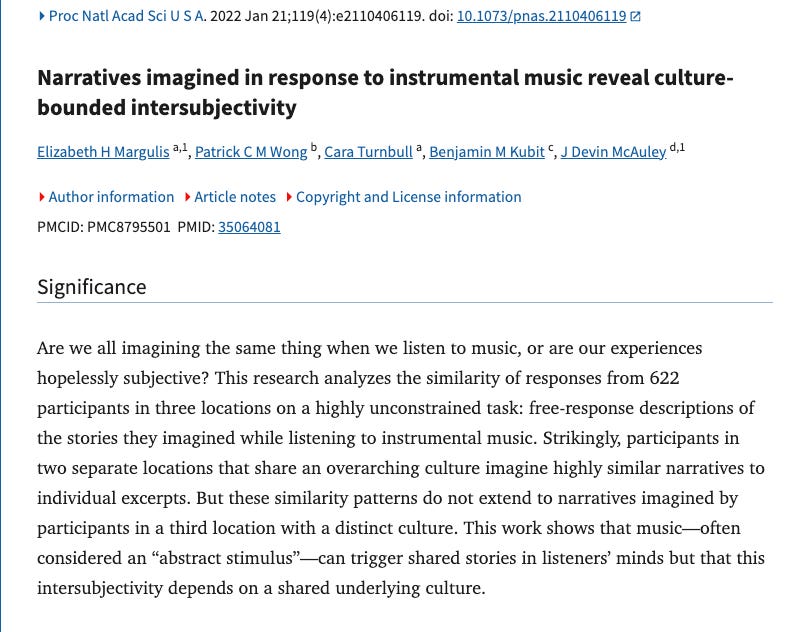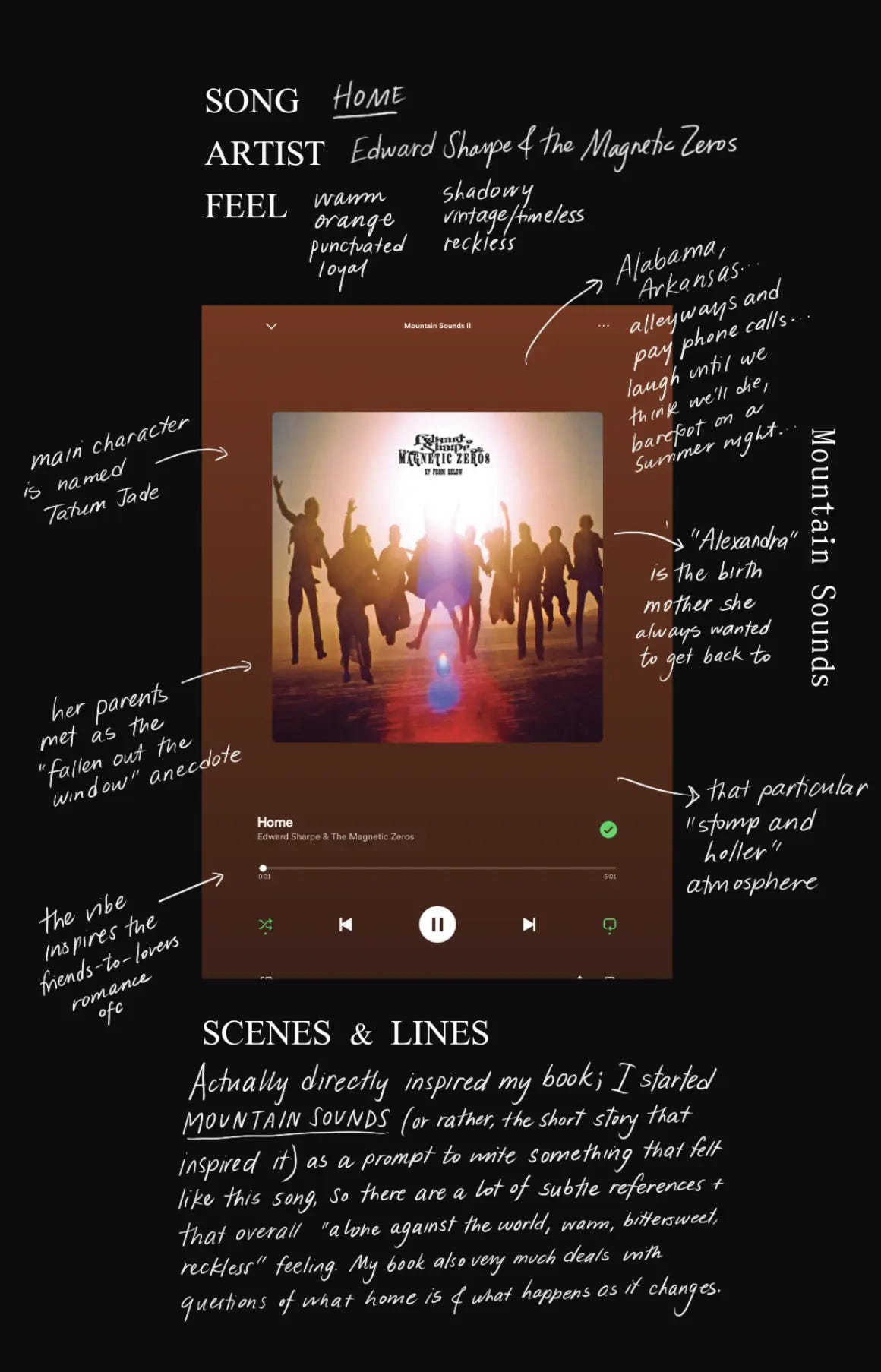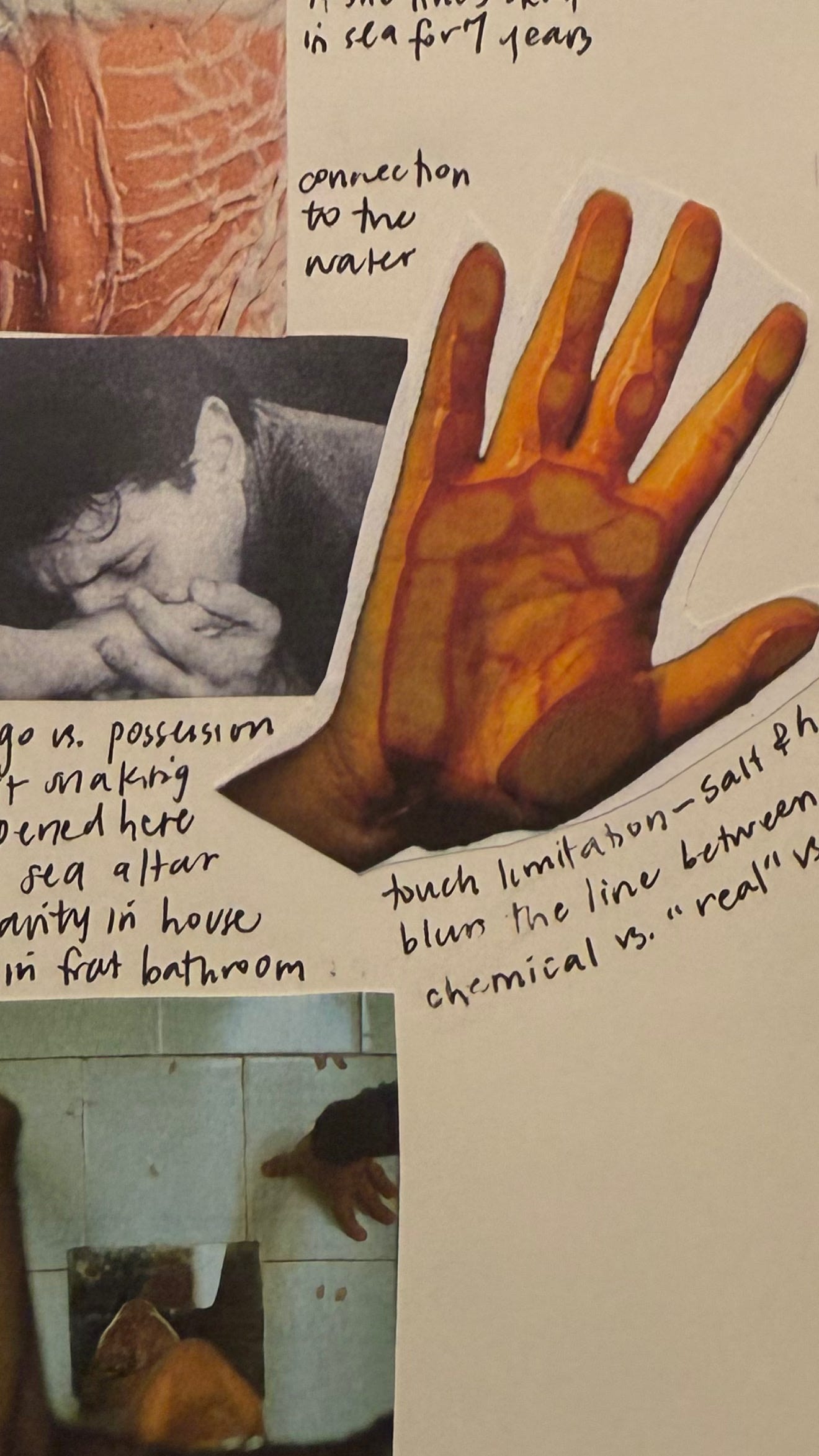How I Build Out a Book's Mood Using the Science of the Senses (Music Edition)
My curiosity about neuroaesthetics is crucial to my worldbuilding strategy—so I break the process down using the science of shared music taste.
It’s a gorgeous Tuesday afternoon in Waialua, and I’m relatively certain I just accidentally drank a few ants alongside my coffee shake. Occupational hazard of a day writing outdoors on my lanai.
(Haven’t you heard? Nature exposure is scientifically proven to be dose-dependent—meaning the more you’re outside, the better you feel. So are kissing and kindness, but I will not be engaging in the former on my front porch. I do have a country playlist for it though.) This post started as a standard monthly “What I’m Listening to” installation, but ended up turning into a musing on the role of music in building out a book’s atmosphere. So I followed that rabbit hole, thinking about cross-training creativity, using visual disciplines to inform verbal ones, etc.
Did I ever tell y’all that one of the original influences of my debut novel was a prompt to write a story that felt like the song Home by Edward Sharpe & the Magnetic Zeros?
Or that I pitched it as being reminiscent of The Lumineers? Or that the fictional town in my book was renamed Kahan (yes, after Noah Kahan) because I realized the previous name was too similar to another area of western North Carolina?
This is what the brainstorm initially looked like, or which threads contributed to the first short story.
Mountain Sounds is primarily atmospheric, so drenching the manuscript in mood—and building it out using other forms of media and texture like visual art, music, etc,.—felt imperative to the writing process.
As I’ll repeat time and time again, what goes unsaid matters just as much to the layers of a story. I’ve had a Post-It on my desk for months now that says “voice is as much what you notice as how you say it” to remind me that voice is also worldbuilding.
Anchoring a book specifically in sensory detail that evokes particular associations within the reader is probably the aim of most writers, but I get especially granular in the how and why it works.
Books are two-way. In some ways, they’re artifacts that cease to be “living documents” as soon as they’re printed for shelves as final versions. But each word, moment, etc,. within one is subjective and associative to the reader. So a lot can affect the reading experience beyond objective plot, prose, etc,.: your expectation, newest unrelated interests, author context, current circumstances, and past and memories. So understanding each of those is important in determining effect.
If there are 90,000 words in a manuscript, I have at least 90,000 chances to make it resonate so you bet I’ll try my damned hardest to be intentional about details without losing the big, overarching feeling. Studying the influences helps to determine what about the specific within them makes them universal, and then helps me to distill my manuscript in similar ways.

Even on a line-level writing wise, I use tidbits like this to consider how best to make the reader forget the outside world. As Maya Angelou puts it, people will forget what you said but not how you made them feel.
Update: Since originally writing this article, I’ve been through various book processes and that’s one of the constant refrains I’ve heard from agents, editors, etc.: one of the strongest qualities of Mountain Sounds is atmosphere.
I want my writing to feel tactile and sensory. My art direction and studio background helps my writing so much because I focus primarily on building out an entire immersive ecosystem. My (very novice) interest in psychology targets what exactly that does to us within our brains, anchoring my strategy in the concrete.
As the creator, I can’t speak to the efficacy of my attempts on my audience yet, but I can gush about how much I love the process itself and how I go about it.
So here’s how I did it:



